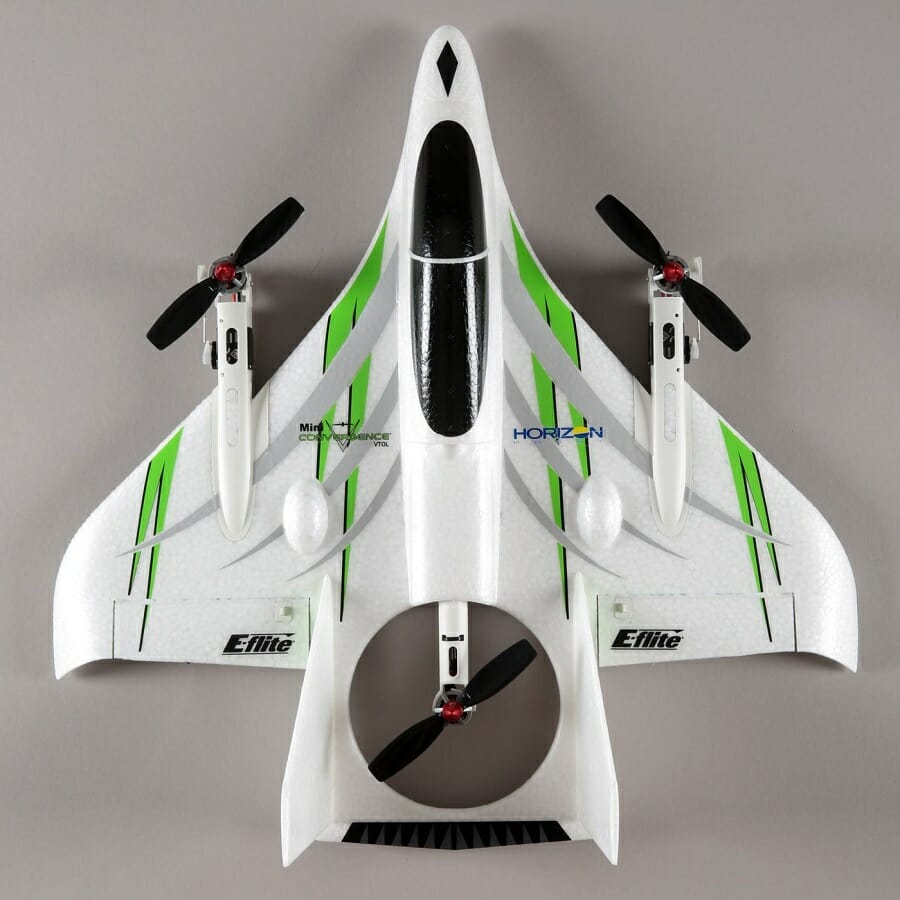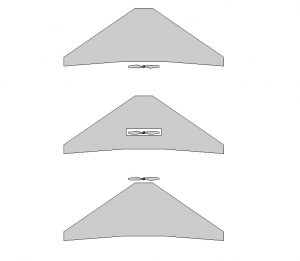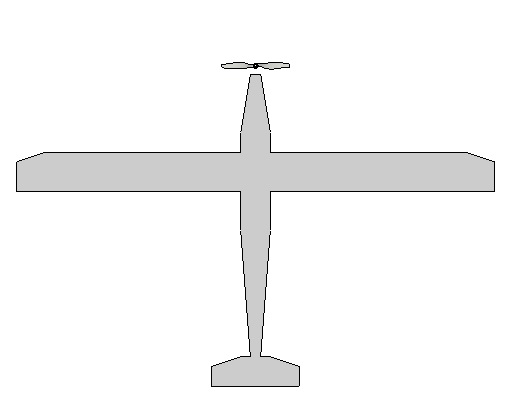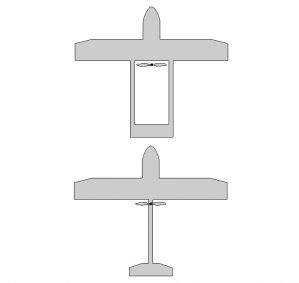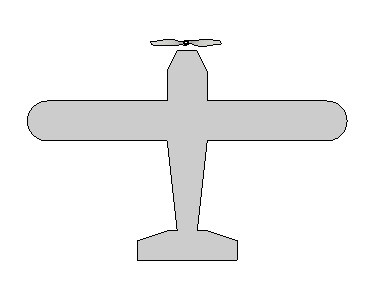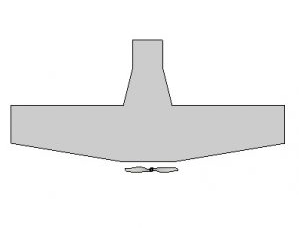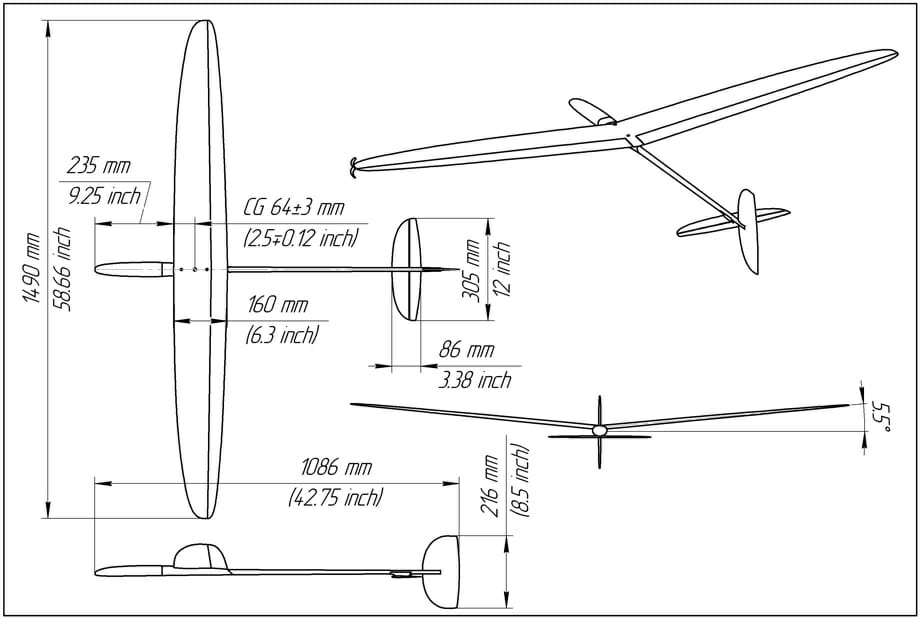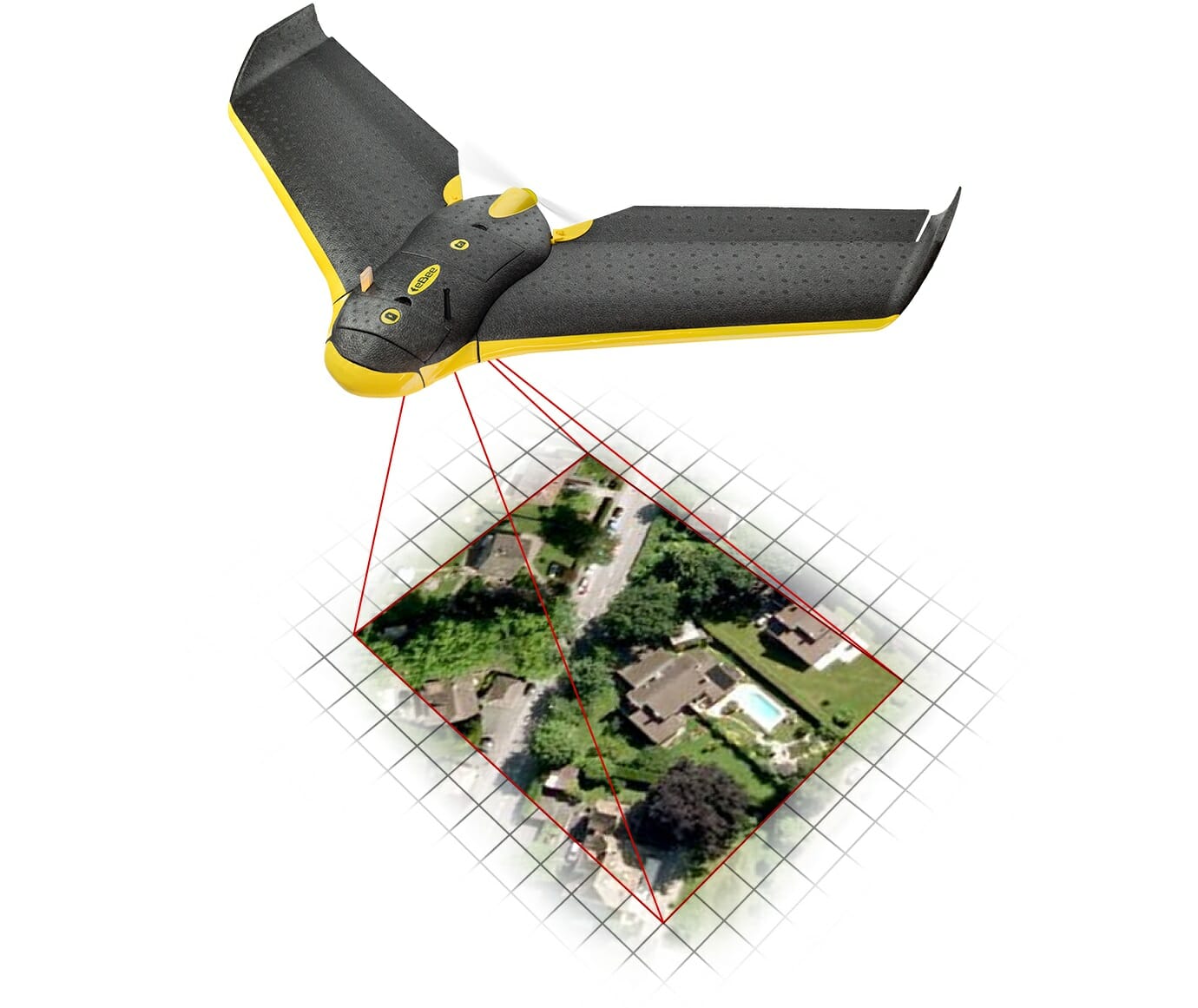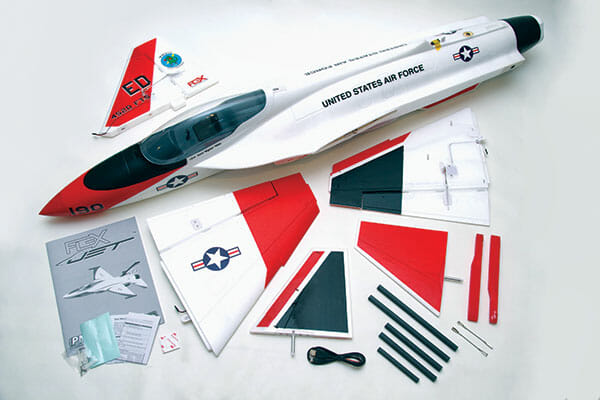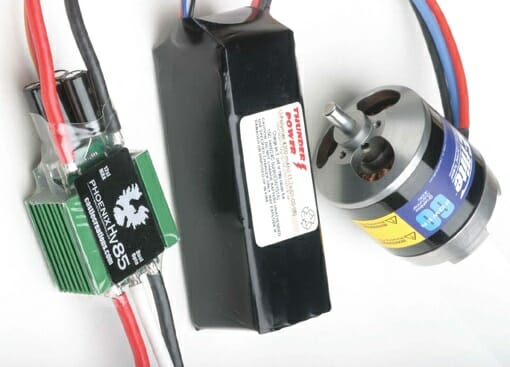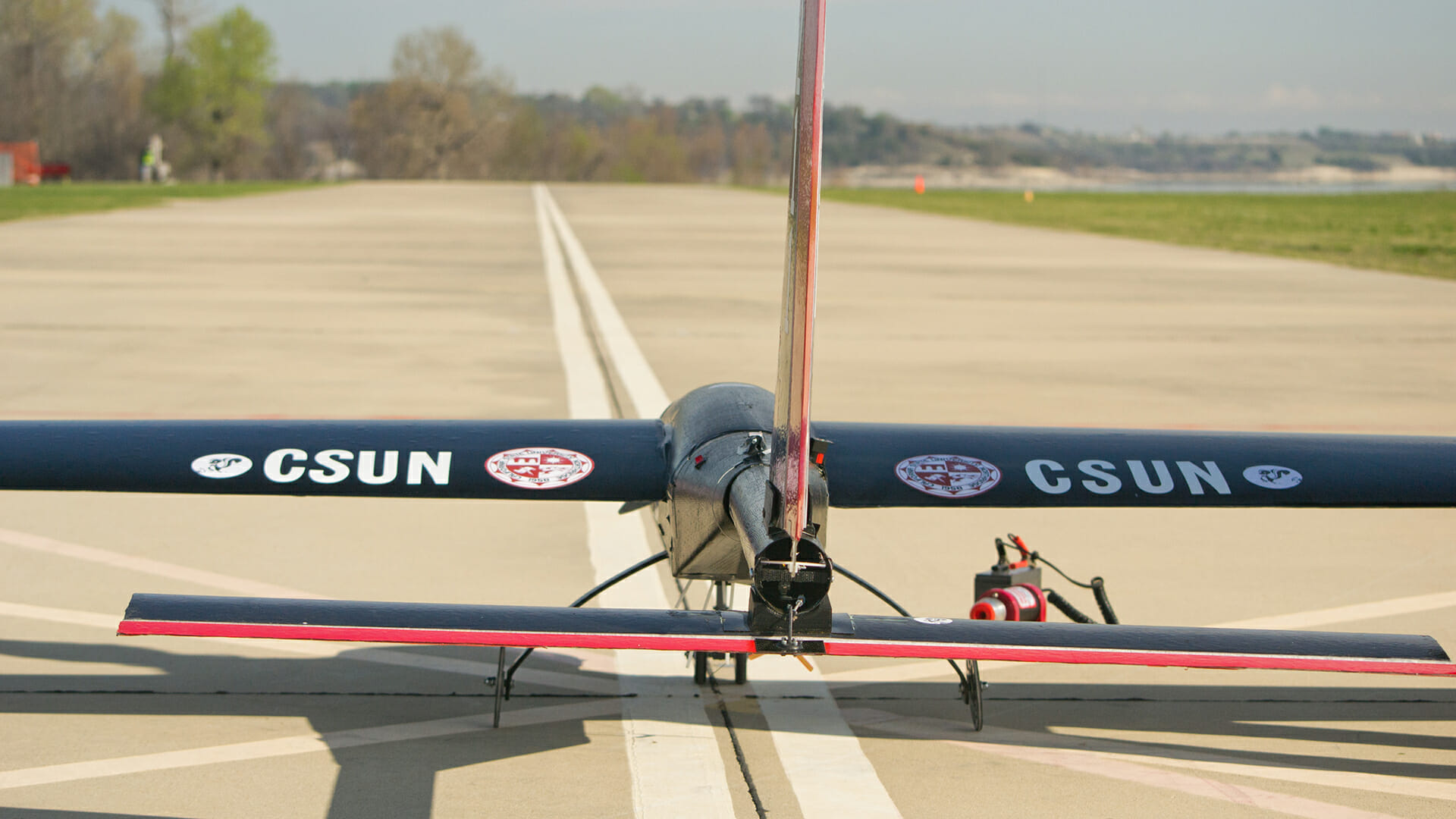Contents
- DIY drone: Lesson 1. Terminology.
- Do-it-yourself drone: Lesson 2. Frames.
- Do-it-yourself drone: Lesson 3. Power plant.
- Do-it-yourself drone: Lesson 4. Flight controller.
- Do-it-yourself drone: Lesson 5. Assembly.
- Do-it-yourself drone: Lesson 6. Performance check.
- DIY Drone: Lesson 7. FPV and Distance.
- Do-it-yourself drone: Lesson 8. Airplanes.
Introduction
The use of small drones for FPV and autonomous mapping is becoming more popular, especially as the popularity of drones for flying in first person mode and the availability of details. This article explores several considerations regarding whether an aircraft is suitable for use as a drone and, if so, how to choose the right type.
Multicopter vs Airplane
What advantages can an airplane offer over a multicopter? While the multicopter is great for fun FPV / autonomous flying, its payload and flight time are still limited, as the rotors must constantly rotate (and therefore consume energy) to combat gravity and keep the drone in the air. Airplanes, on the other hand, use their wings to create lift. So which type is better? Apart from electronic stuffing such as transmitter, receiver, FPV equipment, flight controller, the following features seem to be the most relevant for answering the question posed:
Multicopter
- Able to take off and land vertically as well as hover in place.
- They do not require a lot of space to fly and are essentially “omnidirectional”, capable of very rapidly changing direction and speed.
- The thrust generated by the propellers is what keeps the boat in the air.
- Less intuitive in flight, given that the vessel can change orientation and fly in almost any direction, and gimbals can easily cause disorientation.
- “Medium” multicopters with diameters of 400 to 600mm are the most common and typically cost between US $ 200 and US $ 1000 for a (customized) ready-to-fly rig.
- Despite the fact that multicopters have significantly fewer moving parts than helicopters, almost any malfunction of a quadcopter leads to an accident.
Airplane
- Launched manually by runway or catapult and usually lands on relatively flat grass or runway...
- A large open space is required for flight as the aircraft's maneuverability is limited (ie it is always necessary to move forward).
- The wings create lift.
- Higher lifting capacity.
- Foam models can be indulgent in the event of an accident and most can be repaired / refurbished.
- Models with a wingspan of 500mm to 1.8m are the most common for hobby use, and a complete installation typically costs between US $ 200 and US $ 1000.
- In the event of engine failure, it is still possible to land without damaging the aircraft.
VTOL (vertical takeoff and landing)
- Structures include wings and propellers (not many commercial / production products at the moment).
- The controls are still quite difficult to transition from vertical to horizontal flight.
- The designs are very different from drones with wings or from using / lengthening drone support arms (beams) to enable wing profiles.
- Will not be discussed further in this article.
Considerations
- Launch site: harm or damage to a person or property, UAVs / drones are prohibited from flying over buildings, in densely populated areas or in crowded places. Airplanes ideally require large open areas, while multicopters can operate in more confined spaces. If you do not have open space for flight, then it is best to use a small multicopter.
- Application: The multicopter is more suitable for aerial / FPV photography than ever. Mapping and long-distance flights are best done using an airplane.
- Interest: This should be a factor when choosing if you are interested in one type of drone more than another.
- Budget: The most common multicopter (500mm) is likely to be slightly more expensive than a comparable aircraft (≈ 1.5m wingspan), but not by much. How prepared are you to lose the drone due to a sudden crash or loss of control causing uncontrolled removal?
- Flight Time: An average quadcopter, average size will stay aloft for 10-15 minutes (although some manufacturers may increase this time to 30-40 minutes), while the average a midsize electric aircraft will provide about 20-60 minutes per minute in “normal” use (ie not full throttle), however many different factors need to be considered in both cases.
- Flight Controller: Not all controllers are capable of flying all types of aircraft. Before choosing one of a few, make sure that the type of aircraft you are interested in is supported by the flight controller (if you intended to use it). How to set up a flight controller will not be discussed in this article.
Common UAV / Drone Wing Types
There are many different airframes used to build drones, but some designs are used much more often than others. As more and more manufacturers begin to produce custom aerodynamic frames for autonomous use, unnecessary parts such as cockpit layout, for example, which were usually found on RC aircraft in the past, are disappearing.

Delta Wing
The Flying Wing is by far the simplest (and perhaps the most popular) design. A simple / rudimentary frame can be manufactured using inexpensive expanded polypropylene foam (EPP) and a basic Kline-Fogleman airfoil (Kline-Fogleman or KFm). They traditionally have only two control surfaces, which means that all turns are made with rolls. The propeller is usually in the back (which allows the camera to be mounted in the front), but it flies the same way with the motor in the center or front, provided the center of gravity is correct. Superb construction for its simplicity and tends to fly at high speeds.
Motorized Glider / Glider
If you want to stay aloft for as long as possible (i.e. longest flight time), this design is the best choice. Typically it can have a medium or high wing, and the tail is often T or V-shaped. All frames shown here can be used for fun flight (or more), however, if you want the drone to stay in the air for as long as possible, you need to consider an airplane with a large wing, and this is where gliders are excellent. They are not designed to be the fastest (rather the slowest) and carry the most payload (they should be as light as possible), but a good design can stay airborne for hours. Almost all have a propeller mounted at the front, so in cases where a camera is required, it is usually mounted on the underside / belly of the fuselage.
"Skywalker"
interfere, located just below. The wing is usually trapezoidal or rectangular. An alternative design uses two booms to support the tail (one on each side of the propeller, type " Twin Boom
Standard
Conventional RC planes are still frequently converted for use as drones, with designs ranging from Mustangs (Sport) to Piper Cubs (Trainer). Almost all have a front-mounted propeller (pulling or puller). The wings usually have a straight leading / trailing edge (rectangular), but for fighter spears, the wing may be more trapezoidal. Such designs are most commonly used because they are the most common and readily available RC aircraft. Unfortunately, the aircraft are not suitable for modification and include aesthetic elements that are not needed when used as a UAV. In addition, this is not the most convenient design in terms of choosing an unobstructed place for installing the camera. Most are based on wood that does not forgive accidents.
Custom
There are several custom designs available, one of which is "Drak" (almost inverted delta). This particular design has wings in an almost forward swept position and a propeller in the back. The advantages and disadvantages vary from model to model, although their unique appearance often attracts a lot of attention.
Size
So how big should your plane be? A criterion that determines the future mode of transportation, which is often referred to even before use. Airplanes are (almost) always larger than multicopters, and since the space you plan to fly may not be near your home or business, most of the time, transportation will need to be done by car. Because of this, the frame size for this type of drones tends to be limited to 2 meters (wingspan), and in most cases the wings should be detachable. If the flying wing cannot have detachable wings, then the wingspan will be less than 1.2 meters so that they can be easily placed in the back seat of a vehicle. Classically, standard size RC planes have a wingspan of 0.5 - 2m, so the availability of parts for this size (engine, ESC, battery, servos, etc.) is very good.
Flight duration
The second question you might ask yourself is how long the plane should stay in the air. If you are planning to remotely control the aircraft, it is worth considering that after about 20-30 minutes of piloting, most people get physically / mentally tired and try to complete the flight. For long-term flights, it is recommended to consider a glider with a wingspan of at least 2 meters (with a low payload).
Application
And the third consideration, of course, is the potential application. The list of common ones: FPV flight, mapping, as well as fully autonomous flight using sensors. For autonomous flight, you need a GPS flight controller, and it is also possible to add sensors.
Types of kits
Designing a custom aircraft is rarely a priority for those who just want to take off for first person or autonomous flight. as this usually requires either serious research or adequate knowledge of aerodynamics. For this reason, frames designed specifically for FPV / UAVs are becoming more and more popular. However, given the widespread popularity of conventional RC aircraft, many enthusiasts are still turning to existing RC models (not necessarily scale models) and adapting them for FPV / autonomous use.
RTF (Ready to Fly) - this kit includes everything you need to use the product for its intended purpose, and, as a rule, it includes a fully assembled frame (for more compact delivery, the wings can be dismantled) with pre-installed working stuffing (motor, ESC, servos, flaps, etc.), as well as a transmitter and receiver, battery and charger. Usually you connect the fuselage to the wing (or wings), charge, install and connect the battery, and you're ready to fly. This is the fastest way to get into the air, but at the same time such kits do not allow subsequent upgrades.
BNF (Bind and Fly) - The drone is delivered almost completely assembled (for more compact delivery, the wings can be dismantled). The kit does not include a receiver / transmitter. The assembly is very fast considering that all the parts are already assembled / assembled. You will need to connect the receiver to the servos and powertrain, install the battery and check the CG (Center of Gravity), and then go through the pre-flight launch checklist, perform the calibration. Please note that it may be necessary to customize your control equipment for this UAV model. This is the second fastest way to get into the air.
PNF (Plug and Fly) - the aircraft is mostly fully assembled (for more compact delivery, the wings can be dismantled). The kit includes ESCs, propellers and servos. The kit does not include a transmitter, receiver, battery or charger. You will need to connect the receiver to the servos and powertrain, select and install the battery (check the CG), and then go through the pre-flight launch checklist and calibrate. Please note that it may be necessary to customize your control equipment for this UAV model.
PNP (Plug and Play) - Same as PNF kit.
ARF (Almost Ready to Fly) - products in this configuration usually include a frame and some hardware. Supplied partially assembled with virtually all frame parts / components required to assemble the frame. Some adhesion may be required. The user needs to choose their own transmitter, receiver, motor, ESC, propeller and servos as they are not included.
KIT - These days KIT aircraft include assembly plans, but it will take a long time before the aircraft is worth flying. It is recommended to have some flying experience before flying a KIT aircraft, since one accident (usually on the first flight) can lead to many hours of UAV recovery.
DIY (Do It Yourself / Built from scratch) - which, speaking of aircraft, usually means a completely non-standard design, which may have been designed by the pilot. Usually the designer needs to select all the appropriate components, and often the assembly is done by trial and error.
Construction
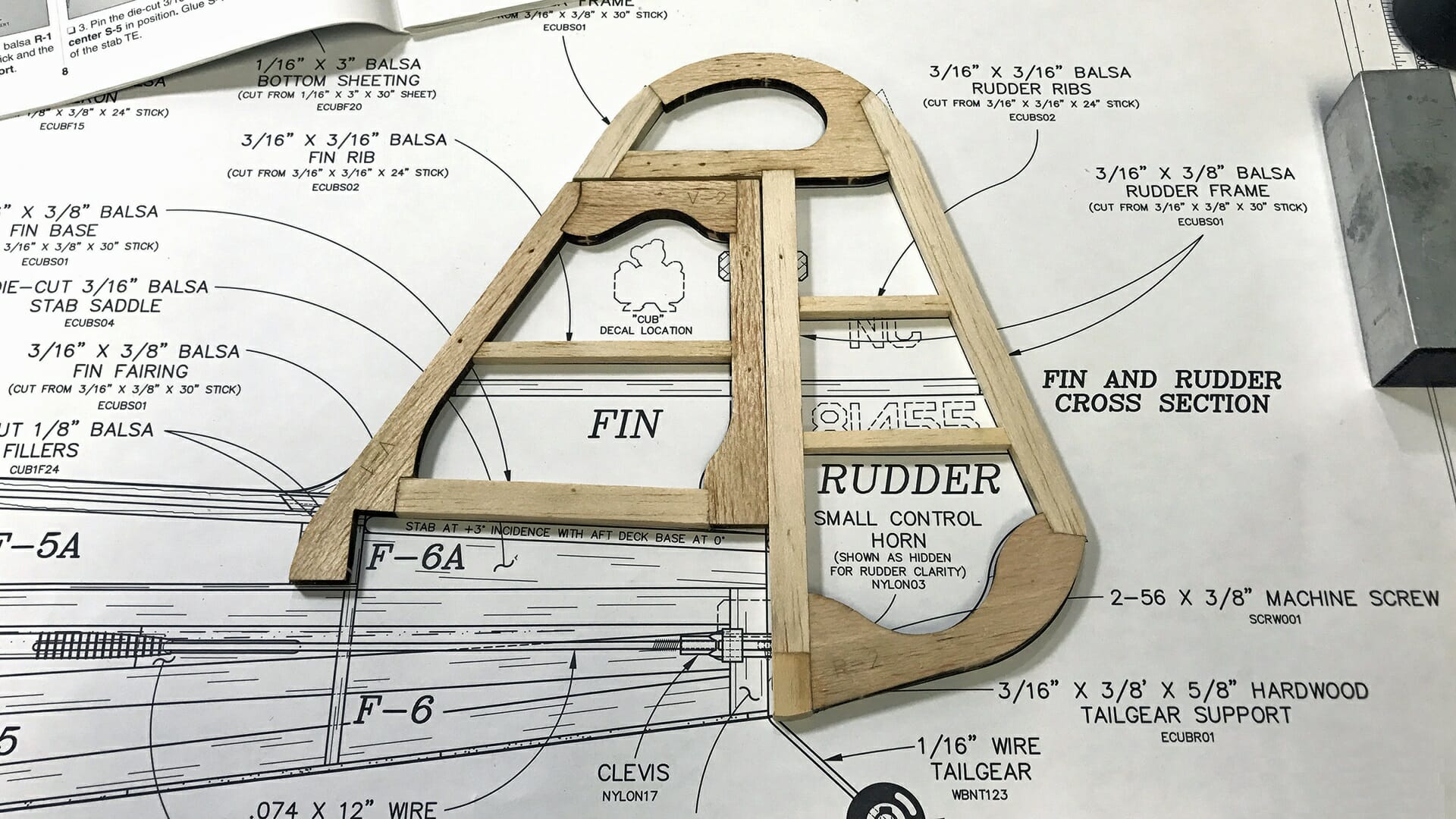
There are many different materials used to create the frame, fenders and tail of RC aircraft / drones. While manned aircraft often use fiberglass, aluminum, and even carbon fiber, UAV manufacturers do not yet use such materials in small craft. The following are the most common materials you will find in the industry:
EPO (Expanded PolyOlefin) - This type of foam is lightweight, stiffer and stronger than expanded polystyrene (EPS). When making molds, it allows you to achieve a fairly smooth surface. In the event of an accident, such foam compresses, and if the force is excessive, the weakest points will be subject to destruction. As a rule, parts made of EPO remain intact, and if the accident is not serious, the damaged elements can be glued later.
EPP (Expanded PolyPropylene) - This type of foam is flexible and elastic, and although slightly heavier than EPO, it is practically indestructible (for practical goals).
EPS (Expanded PolyStyrene) - This type of foam is commonly used as packaging material for televisions, electrical appliances, in the manufacture of helmets, inside ice boxes and for road and home construction. EPS contains about 95-98% air.
Balsa Wood - In the past, most RC aircraft used balsa as their base material. It is an incredibly light, yet indicatively tough and easy-to-work wood, optimally suited for frames, fenders and empennage. Incredible care and time must be invested during construction, and even the lightest blows can cause serious damage to the frame (more severe crashes result in complete destruction).
Blown Plastic - The plastic blow molding process involves a closed die into which semi-molten plastic is blown and then cooled to maintain its shape. The result is a strong hollow shell. Blown plastic is most often used to create a fuselage (as opposed to wings), after manufacturing the user must make the appropriate cutouts. The blown structures / kit can also include pre-cut balsa as a reinforcement. Blown plastic can withstand light impacts and has a tendency to dent rather than collapse.
Vacuumed Plastic - The vacuum forming process involves heating a thin plastic sheet to such an extent that it becomes flexible but not completely melted, and placing it on the covered matrix; while it remains flexible, the air between the die and the sheet is removed (ie, pumped out), which causes the sheet to take its shape. The plastic cools down and a three-dimensional shape is cut from the surrounding material. There are many different types of plastics that can be vacuum formed and their properties can vary. Polycarbonate is a good compromise between weight and impact resistance.
Corrugated Plastic - although few aircraft use it for the fuselage or wings, it is often used to stiffen doors or wherever flat surfaces required. Corrugated plastic looks like corrugated cardboard, only made of plastic. It is very crash and shock resistant, easy to work with without any special tools, and very sleek (aerodynamics).
Which material is better?
So what material should you choose for the airplane? The vast majority of the FPV community uses EPO foam because:
- Compared to balsa, it takes exponentially less assembly time and therefore rises faster into the air.
- Relatively light compared to other materials and decently tough*, yet can be easily modified / cut.
- “Forgiving”, in the sense that it is able to withstand accidents and low-force impacts, and can also be re-glued many times; and again in flight.
- Good quality; Foam models are quite expensive because the designer needs to compensate for the cost of the structure, prototypes and mold, and the cost of the frame is usually proportional to its size.
- Does not require special tools such as a heated laminate iron.
- Most complete frames include the basic required components (balsa models often require additional purchase of laminate, most hardware, and more).
*Foam models are rarely stiff enough on their own, and in order to withstand the loads acting on the wings in flight, the latter require additional reinforcement in the form of "spars" (long and thin rods, usually made of fiberglass or carbon fiber) to increase rigidity. These spars, conceived, must be glued in various strategic places, both above and below the wing (glued into the pre-cut channels). The size of foam models, as a rule, limits only practicality, which is why it is quite rare to see models with a wingspan of more than 2m.
Build
- Foam: It is important to note that far not every glue can be used to glue the foam, as some of the existing ones can corrode and destroy the material. The most common adhesives used for bonding EPO foam are Goop (brand name) and Gorilla Glue (brand name). Goop is transparent and has a thick consistency and excellent bond. Gorilla Glue - requires a little water to activate, the initial consistency is thick. After interaction with water, it foams up to about 400% of its original size and has a yellow color. Gorilla glue can be cut in places where it is undesirable, but it is necessary to prevent the glue from leaking into areas where it should not be (for example, using masking tape), and after application, the fastened parts must be stationary while the glue expands and hardens. The foam is usually cut off with a sharp knife, a soldering gun (as opposed to a soldering iron), or a heated wire. The hand saw tends to break the foam and leave a very rough surface. Foam planes are often white, rarely black, and even less often gray or other colors. Appearance customization is about adding color or patterns that can be done using special paint, laminate or vinyl. Please note that not all paints are suitable for coloring the foam, some can destroy it.
- Balsa: Cyanoacrylate glue is most often used to bond balsa wood - usually a viscous liquid (almost like water), provides a very strong bond between the surfaces to be bonded. Once the frame is ready, it needs to be covered with a laminate (plastic sheet with heat-activated adhesive on one side) to create an aerodynamic surface. The laminating film is heated / applied with the laminating iron, providing a firm / hard surface at the exit. Laminate is only suitable for gluing to balsa wood - it cannot be used to create 3D shapes.
- Composites: It is still rare to see composite materials used to create small aircraft (carbon fiber). These parts are based on epoxy resin (or a special bonding agent) and are more difficult to cut by hand, more often a CNC milling machine is required. The creation of 3D shapes is also quite complex. Airplanes typically use composites for reinforcement.
Power
- Aircraft power plant consists of a motor, propeller (propeller), ESC and battery... Choosing the right parts for the frame should not be a "guess" and it is best to see if the frame manufacturer has any recommendations regarding motor, propeller, or range for a given payload.
- Most enthusiasts these days lean towards electric motors rather than fuels (such as kerosene) because of their lowest operating cost and ease of use. Solar power is rarely used because the power that solar power provides, compared to the added weight of solar panels (which are used to charge batteries), is still not beneficial.
- Select a motor / propeller combination capable of providing the required thrust for your glider at a particular load. Several glider manufacturers offer a number of thrust requirements based on their own experiments to give a general idea of the required range.
- Insufficient airplane power can lead to instability or crash. An overloaded aircraft can be completely unstable in flight. Considering that almost all of the technologies used to create drones come from the radio control industry, there is ample information on choosing the right thrust and servo drives for various applications.
- Center of Mass: The center of mass is the point around which the frame can be placed so that the weight is the same on all sides. Center of Lift / Torque Ratio. This is the point where all the lift generated by the wings and control surfaces is added, usually at the highest point of the airfoil. It is desirable that the center of mass corresponds to the center of the lifting force.
.Launch / Landing
- Runway Launch / Landing: to use the runway, the drone needs wheels, and the runway must be as flat and perfectly paved as possible.
- Manual Trigger: There are two main methods of manual triggering: in-hand swing or overhead swing. The sweeping method is similar to launching a disc (or throwing rocks through water) where the operator tries to accelerate the drone to maximum speed using angular velocity. Alternatively, there is an overhead method where the operator launches the plane upward (preferably with a second operator / assistant).
- Catapult Launch: To accelerate the drone as quickly as possible, a catapult uses one of several different methods: a bungee cable, a winch, or even compressed air. Catapults are not easy to transport and require additional investment and diagnostics.
- Hand grip: It is not difficult to catch a small drone with your hand, provided that the propeller does not rotate, but somehow the method requires some skill.
- Landing: The most commonly used landing method is a skid landing on a decently level surface such as grass. This method is relevant because fewer and fewer drones have landing gear (and the runway is not available), forcing the plane to simply land on any plane possible. Usually, before flying, the pilot finds a suitable landing site. Ideally, the aircraft should have replaceable protective plates due to progressive wear.
- Network “capture”: Although this landing method is most often used by the military for small drones, using a net to catch a drone is very effective where other landing methods are difficult. That being said, setting up a networked system is time consuming and other types of planting are preferable for most enthusiasts.

